This exploration is for all ages, as the colored smilies show. You can do the Audubon’s Birds watercolor paintings with your whole family together!



Audubon’s Birds is an art exploration that accompanies Layers of Learning Unit 4-3 about Romantic Art. When we add more explorations for a unit (like this lesson), you can find those additions on the unit page in our catalog. Our catalog constantly gets updated with fresh links and new content. Layers of Learning also has hands-on explorations and art projects in every unit of this family-friendly curriculum. Learn more about Layers of Learning.
Romantic artists of the 1800s did not paint in one unified style. The movement was about capturing emotion rather than mimicking the popular strokes and styles of other artists of the day. Although the paintings vary drastically from one another, Romantic art can be summed up in at least one of these three points:
- Emotion
- Nature
- Current Events
Romantic art tended to have at least one of those focuses. The art of Romantic artist John James Audobon was focused on nature. Audubon was a naturalist and watercolor artist who was fascinated by birds. He loved to watch them from his boyhood and, as an adult, became determined to study them and document all he learned. He tied yarn to birds’ legs and determined that the same birds came back to nest seasonally. He observed their behaviors and wrote down all he saw. He was also a skilled taxidermist and helped to set up animal displays in museums. He studied and painted birds all across America, even identifying 25 new species. His paintings are detailed and beautiful.
He became determined to make an accurate portrait book of the birds he saw in America. He set a goal to paint one picture every day as he traveled and observed birds. He made over 700 pictures and called his book Birds of America. It was a hit and went into production to be sold in America and Europe.
Step 1: Library Research
Before you begin painting, read a book or two about Romantic Art or John James Audubon. Here are some suggestions, but if you can’t find these, look for books at your library about Romantic Art, the Hudson River School, John James Audubon, or watercolor painting. It might also be fun to find a few books about birds too. The colored smilies above each book tell you what age level they’re recommended for.
As Amazon affiliates, the recommended books and products below kick back a tiny percentage of your purchase to us. It doesn’t affect your cost and it helps us run our website. We thank you!

The Boy Who Drew Birds
by Franklin M. Branley


John James Audubon’s Journal of 1826
by John James Audubon
Step 2: Audubon’s Birds Watercolor Art
You’ll need pencils, art paper, oil pastels, and watercolor paints for this exploration. You’ll also need to look at some of Audubon’s bird paintings as you sketch. You can find them from the library books you chose or go visit this website.
Try your own bird paintings.
Begin by looking at one of Audubon’s bird pictures. Turn it upside down and sketch what you see. When kids sketch based on an upside-down drawing you eliminate pre-conceived notions about what the animal looks like. You focus on the actual shapes and curves, and it’s usually more accurate.

Once the sketch is done, turn it over back over and apply black oil pastel along the pencil lines you drew. You can add colorful oil pastel details as well if you’d like.
Fill in each area within your bird with watercolor paints.
Leave a tiny white border around the perimeter of the bird, but then fill in the rest of the background with a bold color for visual interest. Here are a few examples.
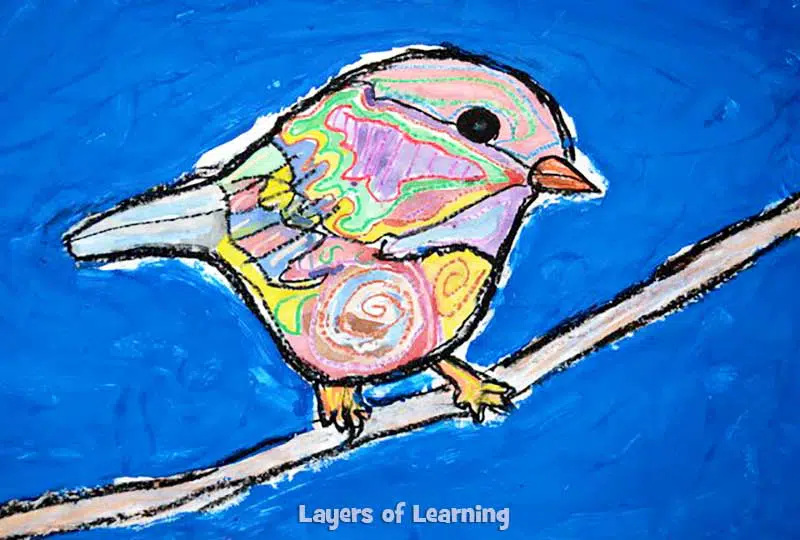
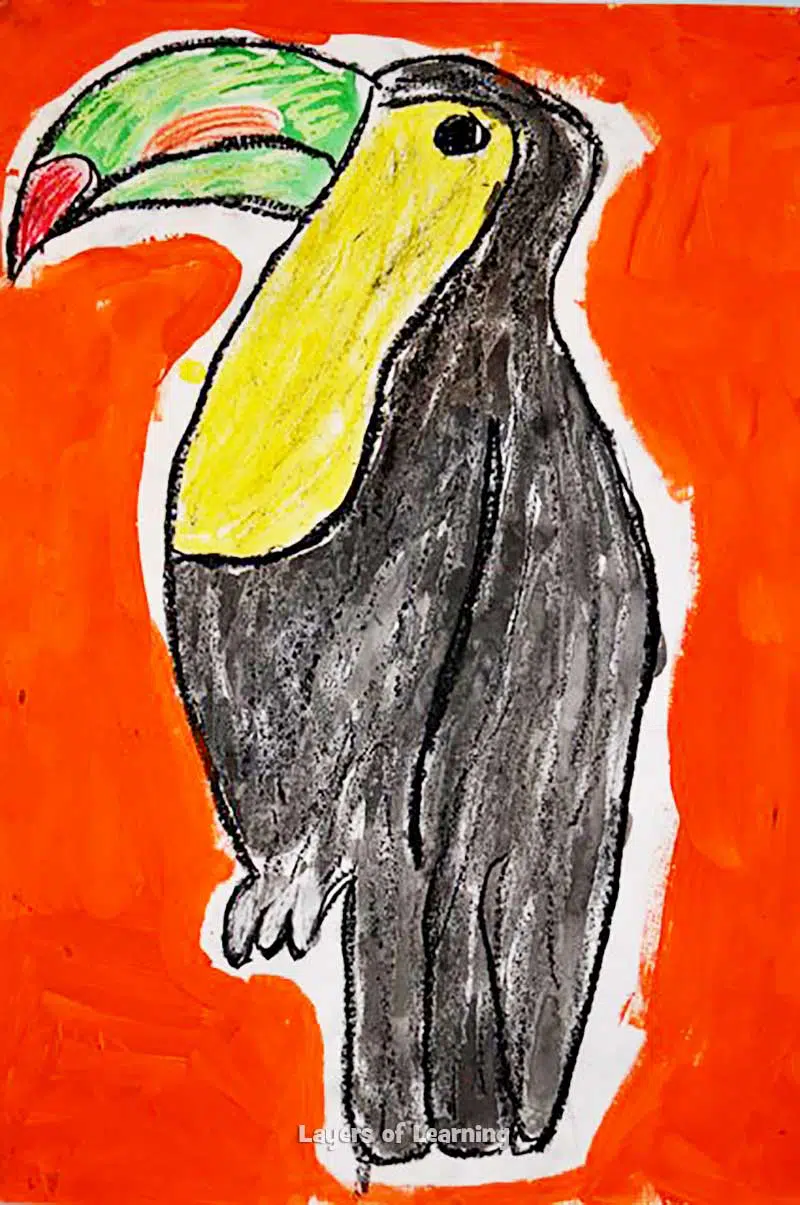
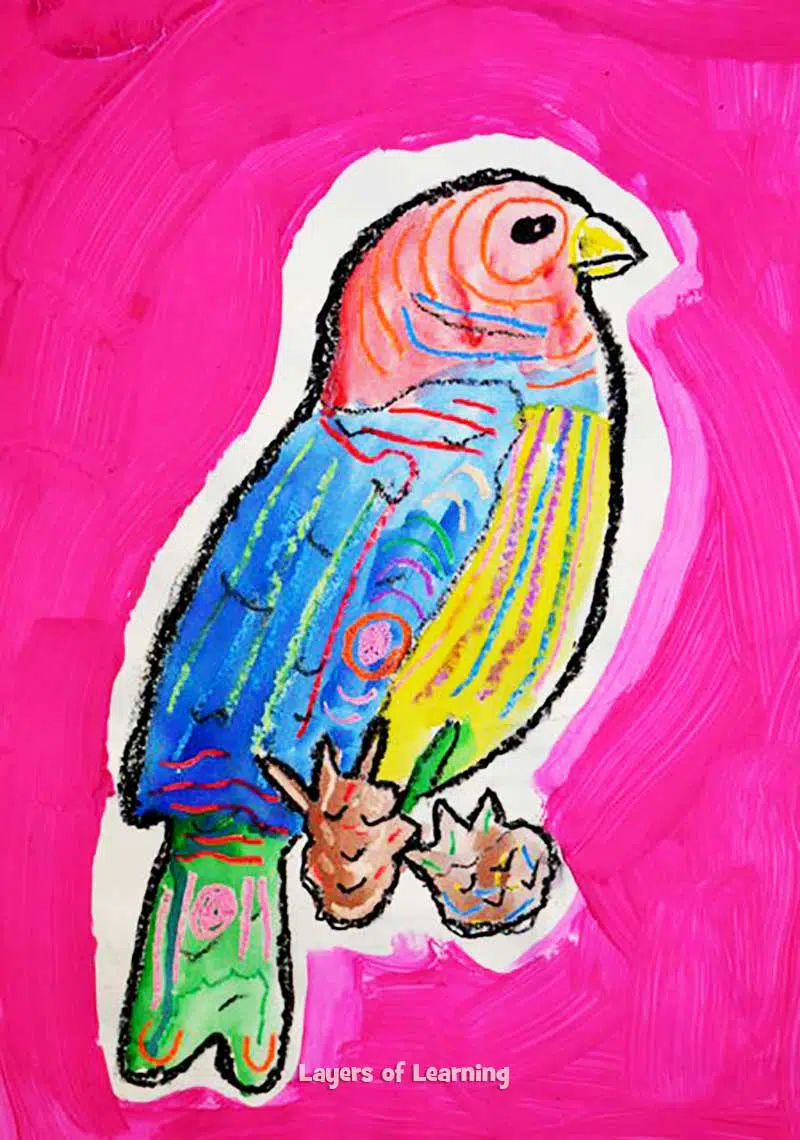
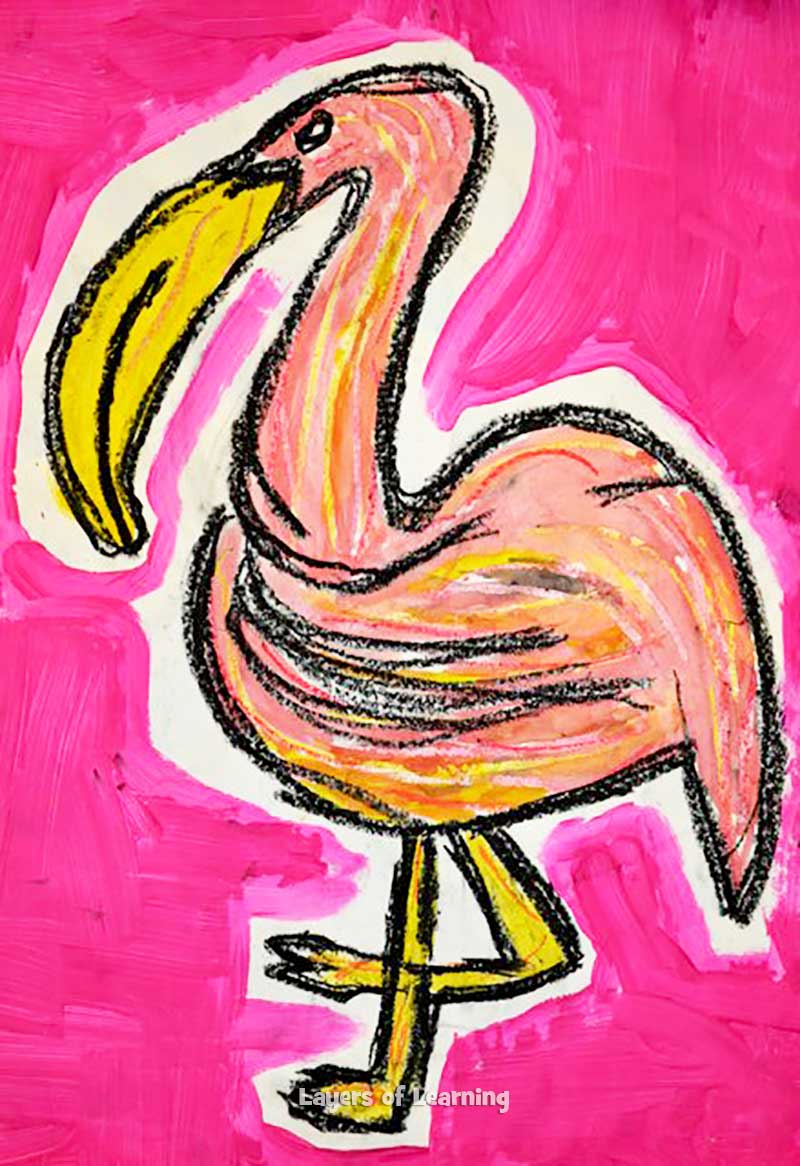
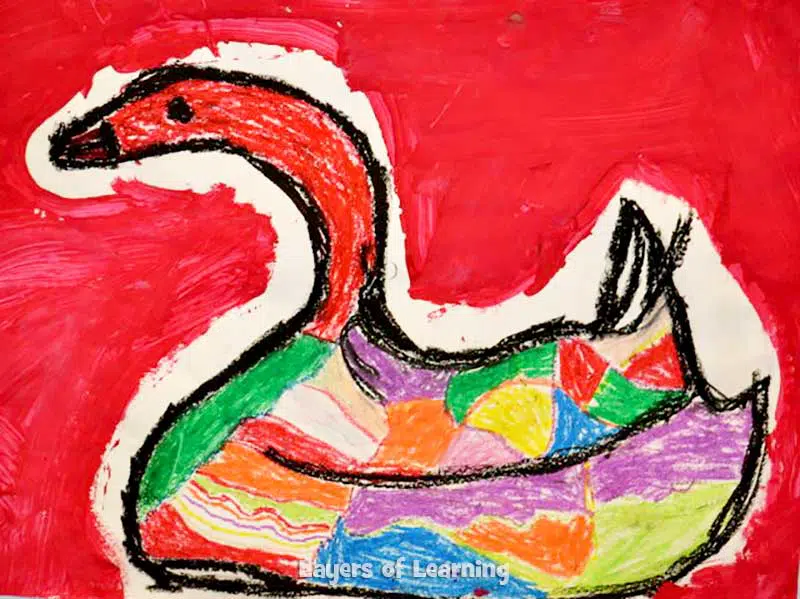
Step 3: Show What You Know
Show off your painting alongside the original painting of Audubon. You might even pull up an actual photograph of the bird species you painted as well. Discuss these things together.
- Did you think it was easier or harder to sketch your bird upside down?
- Did you notice how the oil pastels resist the watercolor paints?
- Tell about the colors you chose to use and how they are similar or different from Audubon’s.
- Romantic art is about emotion as well as nature. Do Audubon’s birds make you feel anything?
Additional Layers
Additional Layers are extra activities you can do or tangents you can take off on. You will find them in the sidebars of each Layers of Learning unit. They are optional, so just choose what interests you.
You may also want to check out Layers of Learning Unit 3-4, with a science section all about birds. You can learn a lot more about those fascinating, flying creatures as you explore them through the lens of science.
-
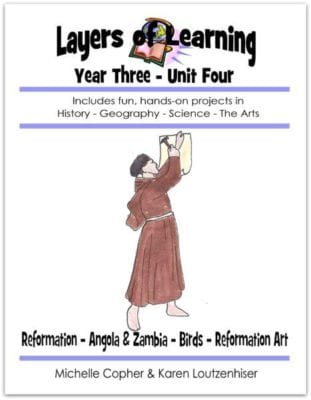 Unit 3-4$0.99 – $4.99
Unit 3-4$0.99 – $4.99
Writer’s Notebook
Write a description of a live bird that you observe outside. Write down what is looks like, describe its surroundings, and record the behaviors you notice.

Additional Layer
Another Romantic artist, John Constable, said this when asked what inspired him:
“The sound of water escaping from mill dams, willows, old rotten planks, slimy posts, and brick work. I love such things. These scenes made me a painter.”

What inspires you?
On The Web
Watch this short video about Audubon and how his paintings were done. You’ll also get a glimpse of how his original paintings are being stored.
Free Samples
Try family-style homeschooling now with free samples of four Layers of Learning units when you subscribe. You'll get to try family-style history, geography, science, and arts with your children.
You can unsubscribe any time.
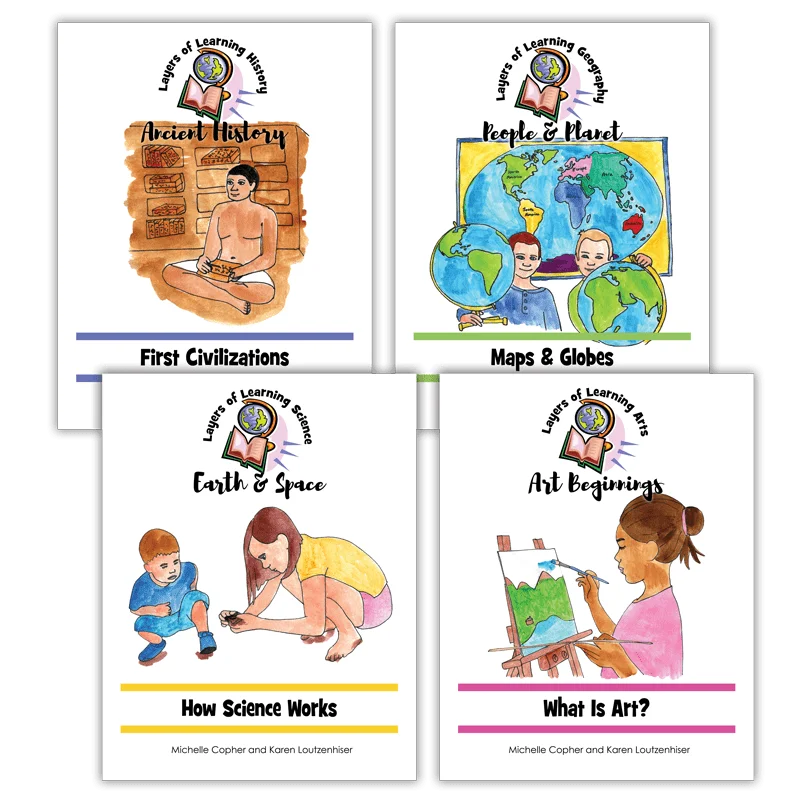

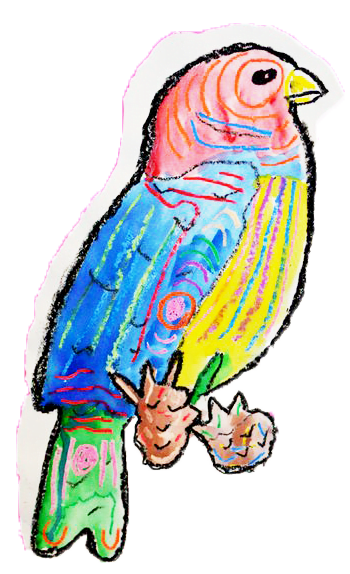
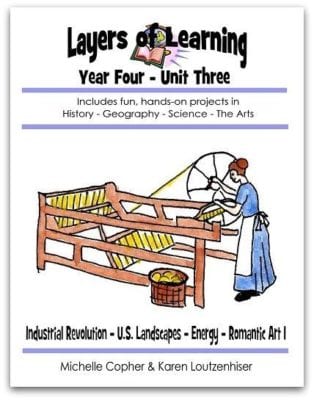






I’m totally pinning this! Beautiful post. thanks!
I stopped past to say that I’ve nominated you for the Super Sweet Blogger Award on my blog today- Have a great Monday!
Thanks so much Tina! (: